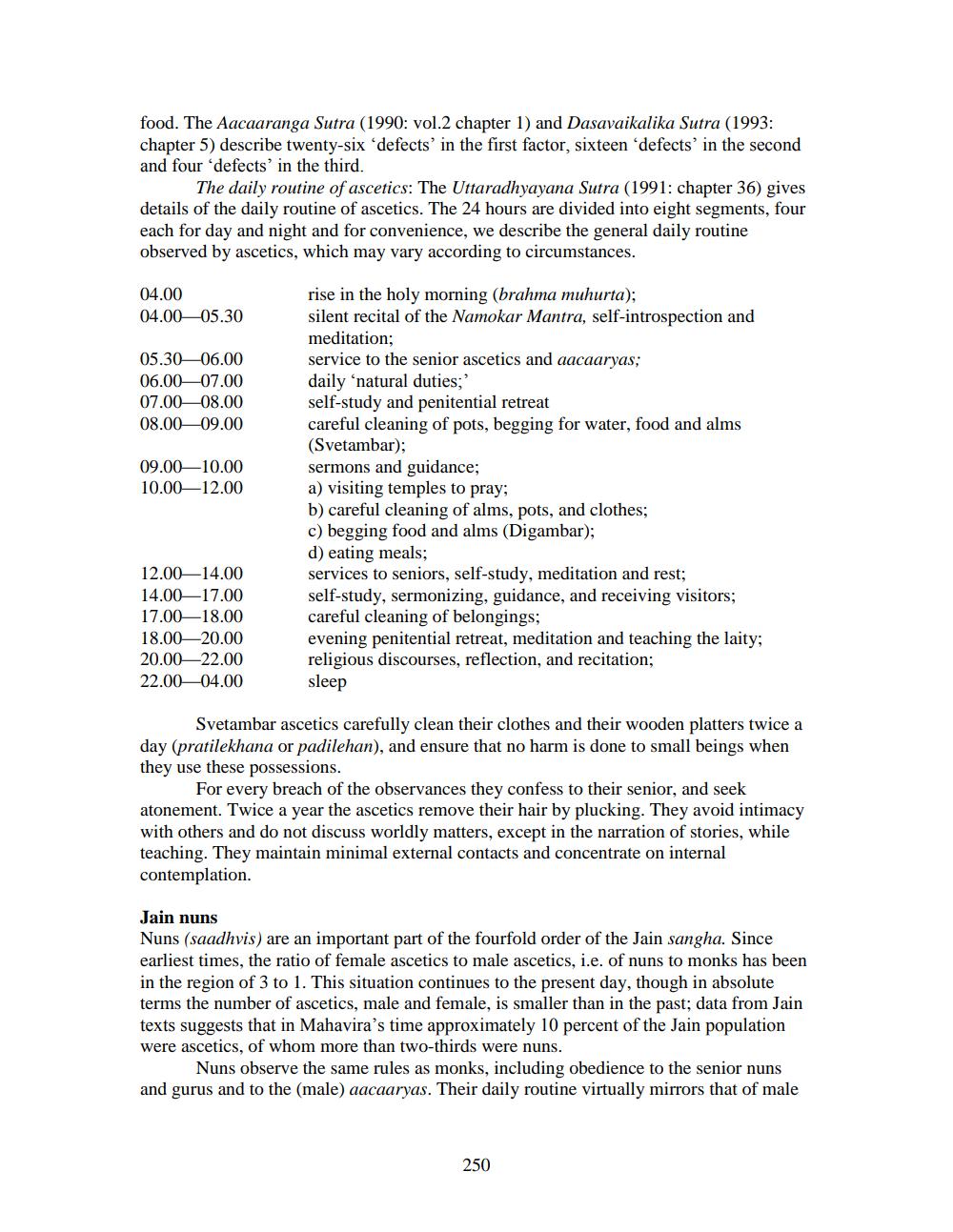________________
food. The Aacaaranga Sutra (1990: vol.2 chapter 1) and Dasavaikalika Sutra (1993: chapter 5) describe twenty-six 'defects' in the first factor, sixteen 'defects' in the second and four defects' in the third.
The daily routine of ascetics: The Uttaradhyayana Sutra (1991: chapter 36) gives details of the daily routine of ascetics. The 24 hours are divided into eight segments, four each for day and night and for convenience, we describe the general daily routine observed by ascetics, which may vary according to circumstances.
04.00 04.00—05.30
05.30-06.00 06.00—07.00 07.00-08.00 08.00-09.00
09.00-10.00 10.00-12.00
rise in the holy morning (brahma muhurta); silent recital of the Namokar Mantra, self-introspection and meditation; service to the senior ascetics and aacaaryas, daily ‘natural duties;' self-study and penitential retreat careful cleaning of pots, begging for water, food and alms (Svetambar); sermons and guidance; a) visiting temples to pray; b) careful cleaning of alms, pots, and clothes; c) begging food and alms (Digambar); d) eating meals; services to seniors, self-study, meditation and rest; self-study, sermonizing, guidance, and receiving visitors; careful cleaning of belongings; evening penitential retreat, meditation and teaching the laity; religious discourses, reflection, and recitation; sleep
12.00-14.00 14.00-17.00 17.00-18.00 18.00-20.00 20.00-22.00 22.00-04.00
Svetambar ascetics carefully clean their clothes and their wooden platters twice a day (pratilekhana or padilehan), and ensure that no harm is done to small beings when they use these possessions.
For every breach of the observances they confess to their senior, and seek atonement. Twice a year the ascetics remove their hair by plucking. They avoid intimacy with others and do not discuss worldly matters, except in the narration of stories, while teaching. They maintain minimal external contacts and concentrate on internal contemplation.
Jain nuns Nuns (saadhvis) are an important part of the fourfold order of the Jain sangha. Since earliest times, the ratio of female ascetics to male ascetics, i.e. of nuns to monks has been in the region of 3 to 1. This situation continues to the present day, though in absolute terms the number of ascetics, male and female, is smaller than in the past; data from Jain texts suggests that in Mahavira's time approximately 10 percent of the Jain population were ascetics, of whom more than two-thirds were nuns.
Nuns observe the same rules as monks, including obedience to the senior nuns and gurus and to the (male) aacaaryas. Their daily routine virtually mirrors that of male
250




